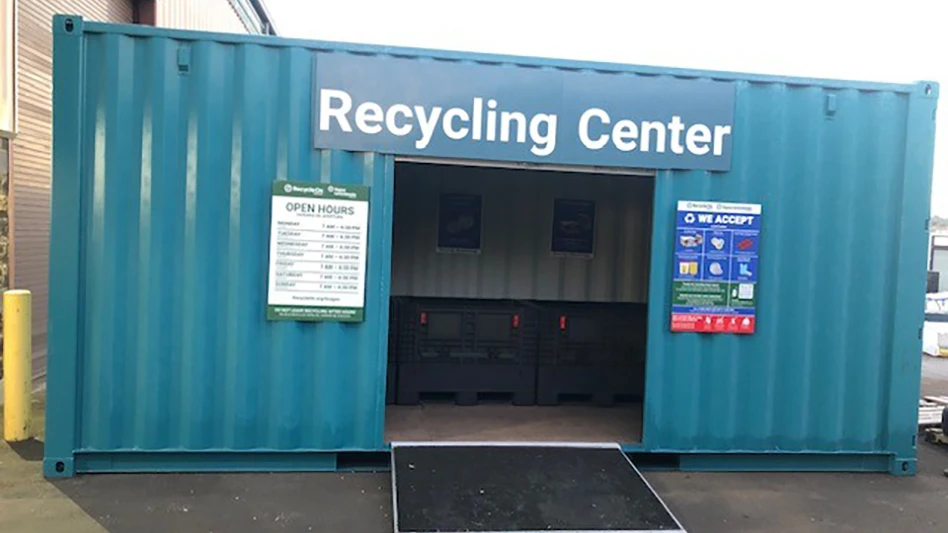|
|
Markets for recovered fiber may be volatile at the present time, although the long-term outlook for recovered fiber overseas is very promising, at least according to several speakers at the recently concluded Paper Recycling Conference & Trade Show. The panel, moderated by Mary Cesar, a consultant to the paper recycling industry, looked at the changing dynamics of the offshore paper recycling industry with a keen eye toward the swelling China market.
|
|
In his presentation, Wade Schuetzeberg, director of America Chung Nam’s European office, highlighted the stunning growth in China’s consumption of recovered fiber. From a base line of 4 million tons of recovered fiber consumed in 1990, the consumption of recovered fiber is expected to grow to close to 28 million tons within the next two years. “In fact, from 1993 to 2003, consumption of recovered paper is up 12 percent per year and net imports 28 percent per year,” Schuetzeberg notes.
Michael Sullivan with Abitibi Recycling/Pan Asia Paper, also focused on the China market, as well as the role that Pan Asian Paper, a paper company jointly owned by Abitibi-Consolidated and Norske Skog, a European paper concern.
According to Sullivan, Pan Asia produces 1.3 million tons of newsprint in South Korea, Thailand and China along with an additional 330K metric tons under construction in Hebei Province, China.
Focusing on newsprint, Sullivan sees strong growth in the China market. “We believe that, when combined with the country’s economic plans for rural China, a prolonged rally in newsprint demand will occur and can be sustained. That’s why Abitibi-Consolidated is proud to be a 50 percent owner in Asia’s premier newsprint company, PanAsia Paper.”
While the China market has been growing quite strongly, in the short term, several of the speakers noted some potential stumbles along the way. One area of concern is whether China’s DGP is growing too fast.
|
|
While China will continue to purchase significant amounts of recovered fiber from the United States, there are growing calls for an improvement in the quality of the fiber being shipped to China.
Only recently Chinese government agencies have called for a shift in strategies to curtail shipments of poor quality fiber.
Other factors that will likely play a role in the China market is the growing shipping industry capacity problems. While noting that recovered fiber is the largest volume item shipped from the United States, “A lack of cargo carriers and equipment has caused imbalances throughout the Far East trade lanes with North America and Europe. And there is one root cause: China’s emergence as an economic power,” Schuetzeberg adds.
In his presentation, David Null, a consultant with Jaakko Poyry, noted the following trends taking place:
Fueled by the high GDP growth in China, paper demand is expected to increase from 38 to 61 million metric tons from 2000 to 2010, a 60% increase.
|
|
− Capacity and production will likewise increase. JP expects production to grow from 31 to 53 million metric tons.
− Paper and paperboard capacity is expected to increase by 10 million metric tons from 2004-2006. Most of this increase will be containerboard and cartonboard, and rely on recovered paper.
− Consequently, recovered paper use will nearly double, increasing from 16 to 34 million mt from 2000 to 2010.
− OCC supply will be particularly challenged, with use increasing from 8 to 23 million metric tons, and imports increasing from 1 to 6 million tons.
Latest from Recycling Today
- US Steel to restart Illinois blast furnace
- AISI, Aluminum Association cite USMCA triangular trading concerns
- Nucor names new president
- DOE rare earths funding is open to recyclers
- Design for Recycling Resolution introduced
- PetStar PET recycling plant expands
- Iron Bull addresses scrap handling needs with custom hoppers
- REgroup, CP Group to build advanced MRF in Nova Scotia









